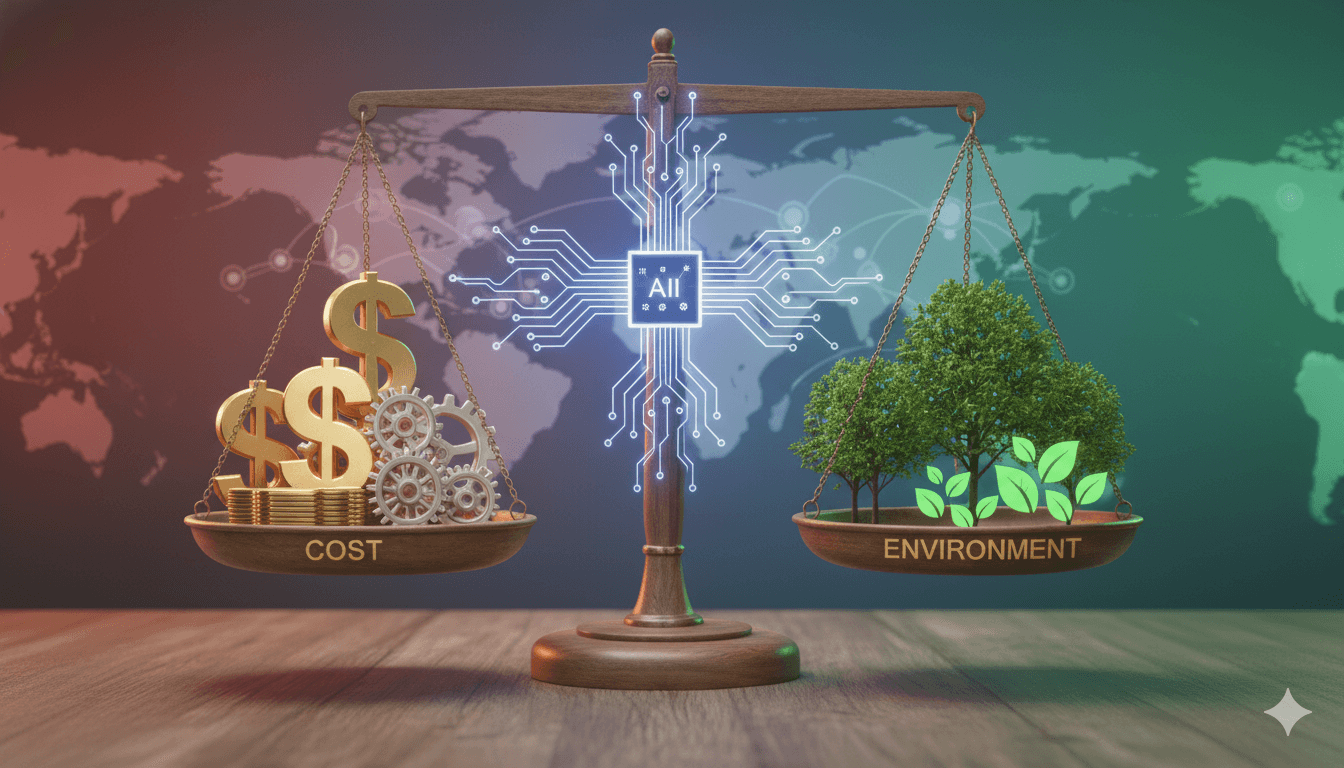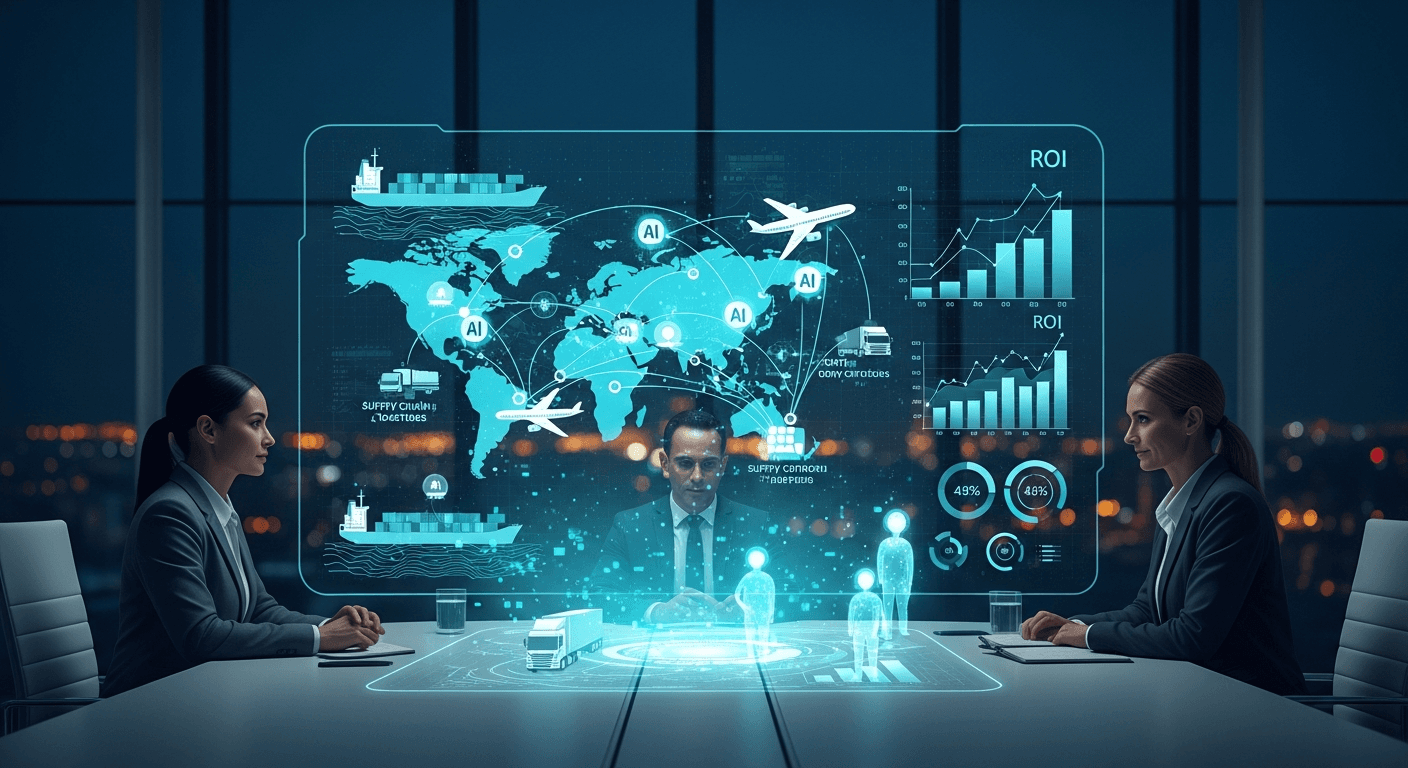Thursday, 30 Oct 2025
|Sustainable Procurement AI: Balancing Cost, Performance, Environmental Impact

Introduction: Integrating Sustainability into Procurement Excellence
Traditional procurement focuses on cost and performance, but ignoring environmental impact leads to 15-25% hidden risks from non-compliant suppliers and rising carbon taxes projected at $50B globally by 2030. AI-driven multi-objective decision-making optimizes procurement by weighing sustainability metrics—like Scope 3 emissions and ethical sourcing—alongside KPIs such as total cost of ownership (TCO) and on-time delivery, achieving 20-30% better balanced outcomes. These systems use advanced algorithms to simulate trade-offs, recommending suppliers that cut costs by 10% while reducing environmental footprints by 15%.
For procurement managers, CFOs, and sustainability leads in logistics, this approach aligns with mandates like the EU Green Deal, turning procurement into a driver of value and compliance. This guide explores challenges in current practices, AI strategies for multi-objective optimization, implementation steps, and measurable benefits to foster sustainable, high-performing supply chains. With 70% of executives prioritizing green procurement, AI enables firms to lead in responsible sourcing without sacrificing profitability.
Challenges in Conventional Procurement Strategies
Cost-centric models overlook sustainability, resulting in supplier choices that inflate long-term expenses through penalties or reputational damage, with 40% of firms facing ESG-related disruptions annually. Performance metrics like quality and reliability often conflict with environmental goals, such as selecting low-cost but high-emission carriers that increase Scope 3 by 20%. Data fragmentation across ERP, supplier portals, and sustainability reports hinders holistic evaluations, leading to suboptimal decisions.
Global volatility—tariffs, resource scarcity—amplifies these issues, where manual balancing fails to account for dynamic factors like carbon pricing fluctuations. This reactive stance limits innovation, with only 30% of procurement teams integrating ESG effectively. AI addresses these by providing integrated, predictive insights for truly balanced optimization.
AI for Multi-Objective Decision-Making in Procurement
AI platforms employ Pareto optimization to balance multiple goals, using genetic algorithms to generate supplier portfolios that maximize performance while minimizing cost and impact. Machine learning ingests historical data, market trends, and ESG scores to forecast outcomes, such as a 12% cost saving paired with 18% emission reduction. Natural language processing extracts sustainability data from unstructured sources like reports, enriching decision models.
Agent-based systems simulate negotiations, dynamically adjusting bids based on real-time KPIs to ensure equilibrium across objectives. Explainable AI provides transparency, showing how weights—like 40% cost, 30% performance, 30% sustainability—drive recommendations. This results in 25% faster procurement cycles with superior balance.
Incorporating Sustainability Metrics
AI quantifies environmental impact via lifecycle assessments, calculating metrics like water usage or recyclability alongside TCO. Integration with tools like CDP databases auto-scores suppliers on green criteria, flagging high-impact alternatives. Predictive models assess future risks, such as regulatory changes, to prioritize resilient, sustainable options.
Real-time dashboards visualize trade-offs, allowing users to adjust parameters for custom balances. This embedding boosts ESG alignment by 35% without performance dips.
Balancing Traditional KPIs
For cost and performance, AI uses reinforcement learning to learn from past procurements, optimizing for metrics like defect rates and delivery speed. Multi-criteria decision analysis (MCDA) ranks suppliers by weighted scores, ensuring no single KPI dominates. Dynamic pricing agents negotiate contracts that lock in performance SLAs while hedging environmental costs.
Scenario planning tests robustness, simulating disruptions to validate balanced choices. Outcomes include 15% TCO reductions with sustained 98% on-time rates.
Trade-Off Analysis Techniques
Pareto frontiers map feasible solutions, highlighting non-dominated options where improving one metric (e.g., cost) doesn't worsen others excessively. Fuzzy logic handles uncertain data, like variable emission factors, for robust decisions. Collaborative filtering draws from peer benchmarks to refine balances across industries.
These techniques enable 40% more efficient negotiations, fostering supplier ecosystems.
Integration Strategies: Embedding AI in Procurement Workflows
Connect AI to core systems like SAP or Oracle via APIs, enabling seamless data flows from RFPs to contract awards. Cloud-based platforms scale for global operations, processing thousands of supplier evaluations in parallel. Low-code interfaces empower non-technical users to define objectives and monitor KPIs.
Hybrid models combine on-prem security for sensitive bids with cloud analytics for sustainability insights. Pilot programs in high-spend categories validate integrations before enterprise rollout. Governance frameworks ensure bias-free models, with regular audits maintaining accuracy.
Data Requirements and Preparation
High-quality data on costs, performance histories, and ESG metrics is essential, sourced from IoT, audits, and third-party APIs. Data cleansing tools remove inconsistencies, while anonymization protects supplier privacy. Federated learning aggregates insights without centralizing data, ideal for multi-vendor networks.
Enriched datasets via external feeds like commodity indices enhance predictive power.
Roadmap: Achieving Optimized Sustainable Procurement
Phase 1 (Months 1-2): Assess current KPIs and sustainability gaps, selecting AI tools with MCDA capabilities. Phase 2 (Months 3-4): Integrate data sources and pilot optimizations on 20% of procurements, measuring balanced outcomes. Phase 3 (Months 5-8): Scale to full operations, training teams on dashboards and refining models.
Ongoing: Quarterly reviews adjust weights based on market shifts, targeting 25% sustainability uplift. Budget 7-10% of procurement spend initially, aiming for 3-5x ROI. Overcome resistance through change management and quick wins.
ROI and Case Studies: Proven Multi-Objective Success
AI optimization yields 200-350% ROI via 18% cost savings, 12% performance gains, and 20% environmental reductions. Procter & Gamble's AI system balanced procurement, cutting emissions by 15% while saving $100M. Unilever integrated sustainability metrics, achieving 25% greener sourcing without cost increases.
These examples demonstrate how multi-objective AI enhances competitiveness and compliance.
Explore More on Debales.ai
- In What Ways Does AI Improve Sustainability in Logistics E.g. Reducing Carbon Footprint
- AI-Powered Circular Supply Chains: Sustainability Meets Smart Logistics
- Ethical Considerations of AI in Logistics: Addressing Job Displacement
- How AI Improves Supplier Selection and Relationship Management
- Multi-Agent Orchestration: Autonomous Collaboration in Supply Chains
Optimize Procurement Sustainably with AI
Balance your procurement goals with AI precision. Connect with Debales.ai for a multi-objective assessment and tailored strategy.
Schedule a Procurement AI Demo
Conclusion: Sustainable Procurement as Strategic Imperative
Multi-objective AI decision-making revolutionizes sustainable procurement by harmonizing cost, performance, and environmental impact, integrating sustainability metrics with traditional KPIs for optimal outcomes. This balanced approach drives efficiency, compliance, and long-term value in logistics networks. Leverage AI to redefine procurement excellence today.
All blog posts
View All →
Tuesday, 4 Nov 2025
Stakeholder Alignment for AI Investments in Logistics 2025: ROI and Risk Frameworks that Win Approval
Win board confidence for AI in logistics in 2025 with ROI narratives, risk controls, and case studies from UPS, DHL, Amazon, Walmart, and Maersk. Tags

Friday, 31 Oct 2025
AI Skills Gap: Make-or-Buy Analysis for Logistics Talent and Partnerships
Address the AI skills gap in logistics: Make-or-buy strategies for internal training, talent acquisition, and tech partnerships to build capabilities efficiently.